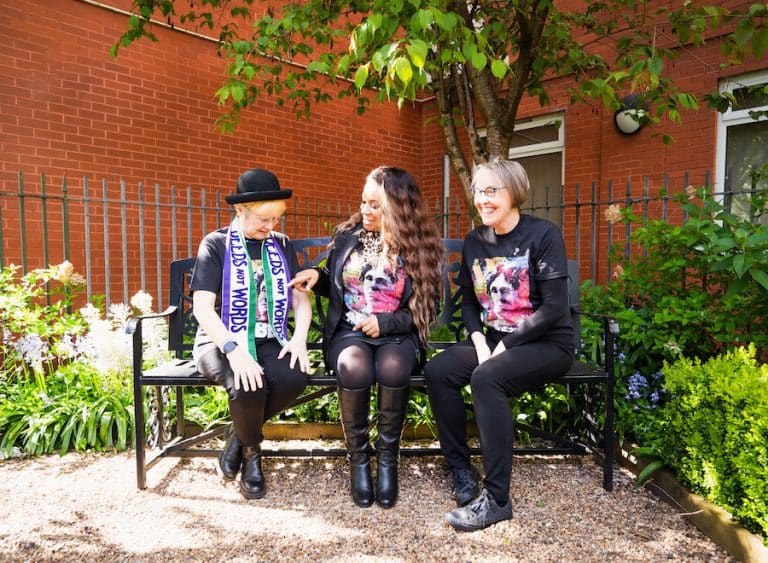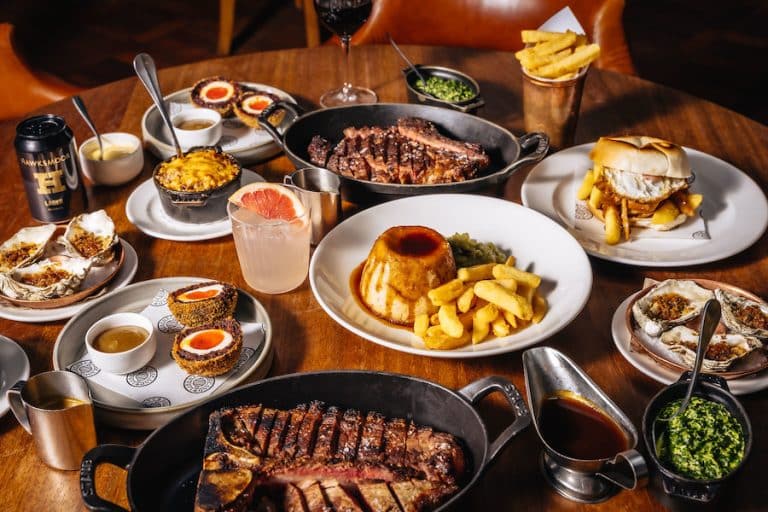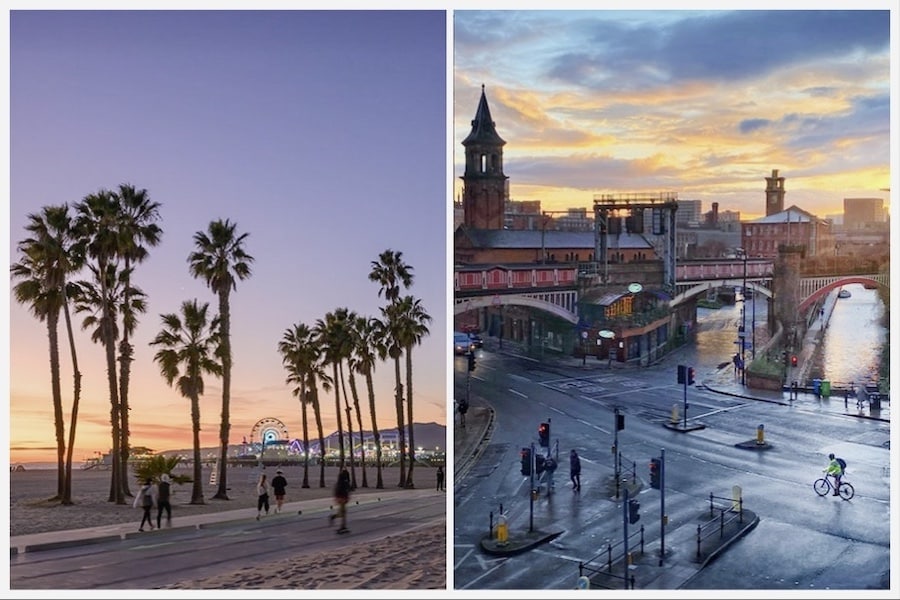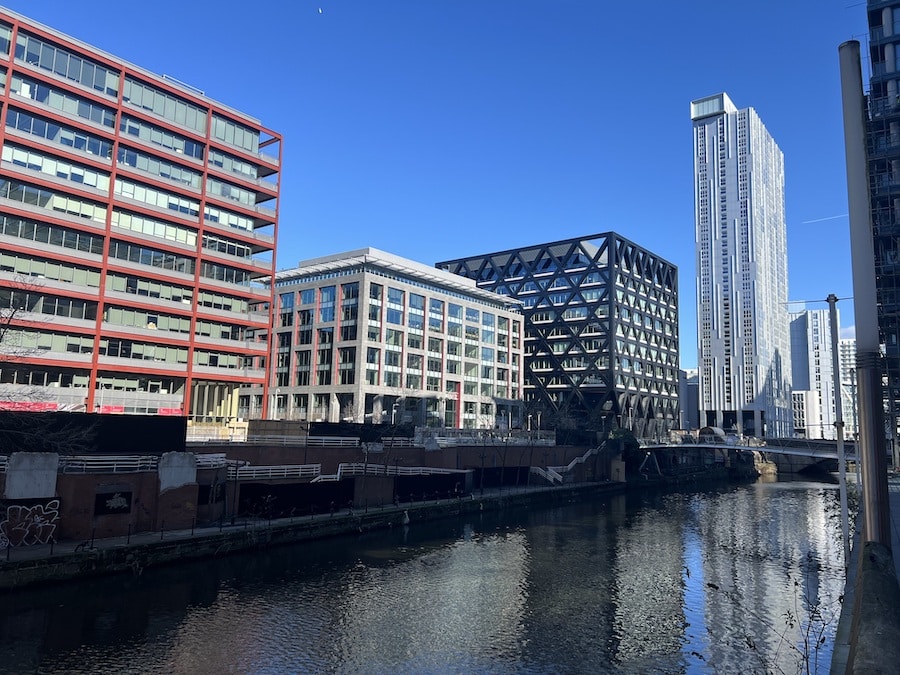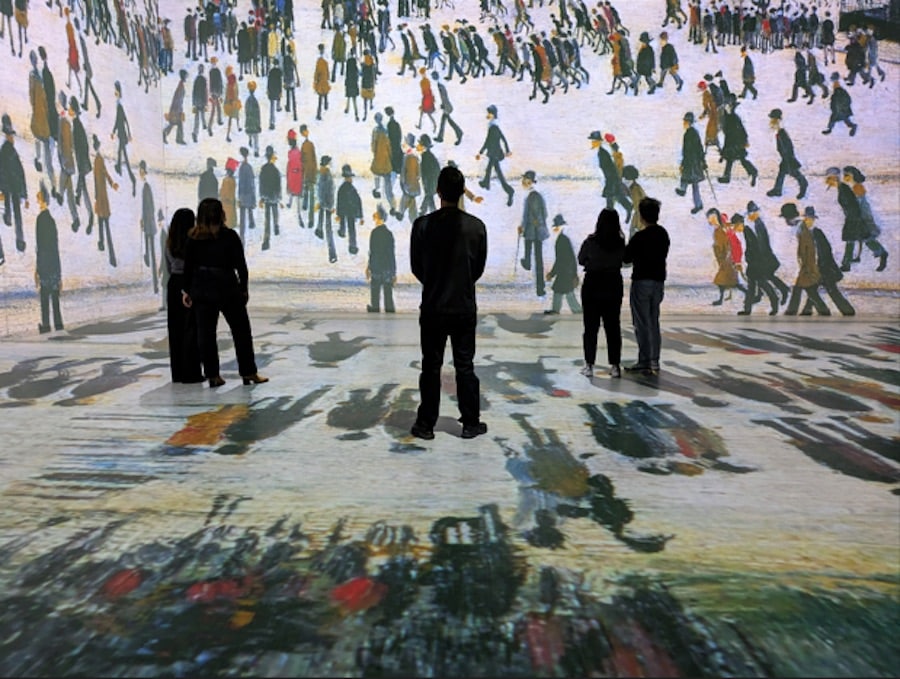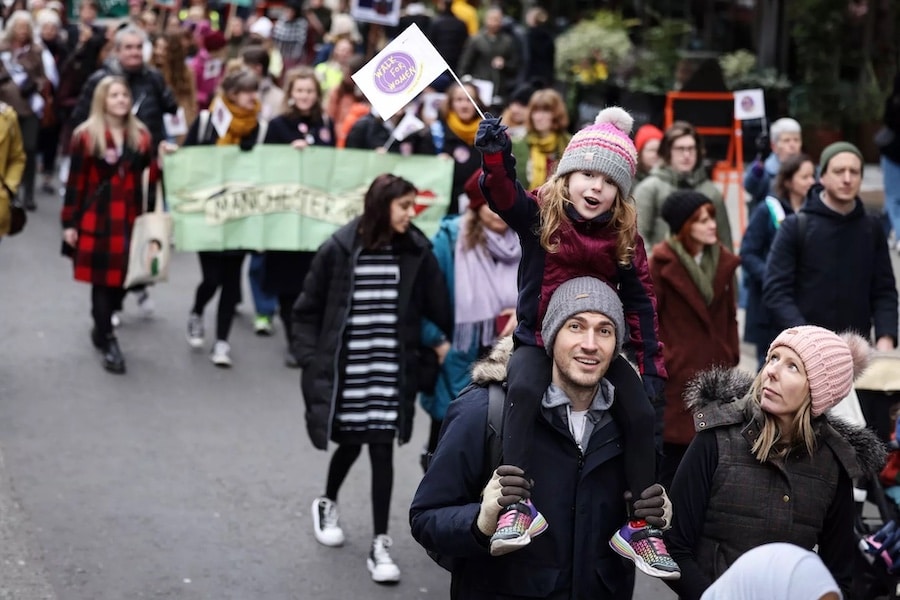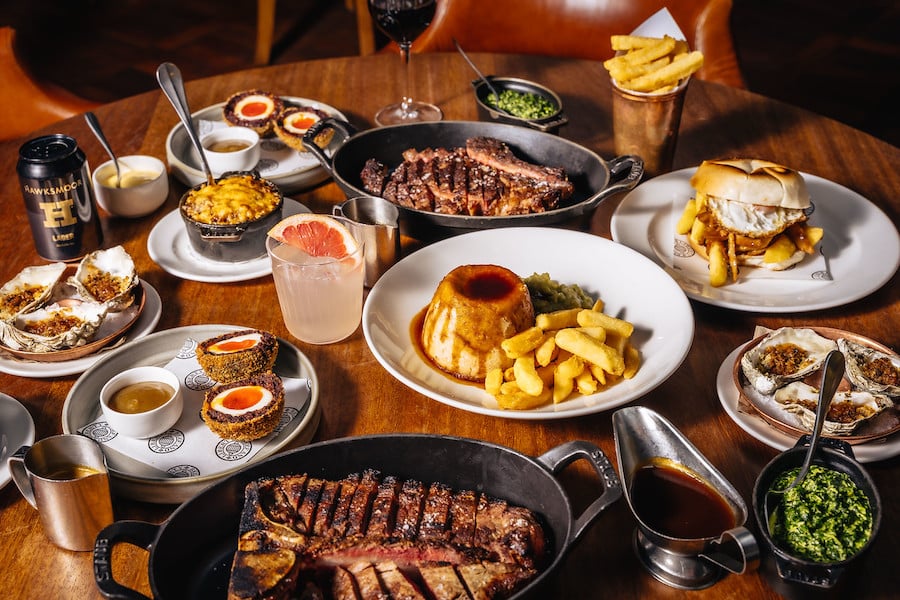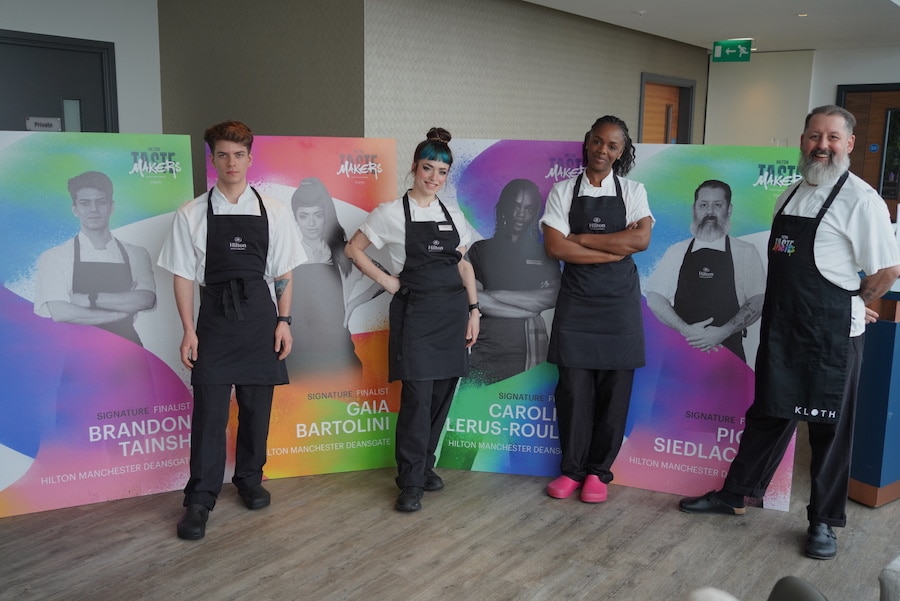Now you can explore the rich history of the Corn Exchange
- Written by Thom Bamford
- Last updated 1 year ago
- City of Manchester, Culture, Exhibitions, Featured, History, Sponsored
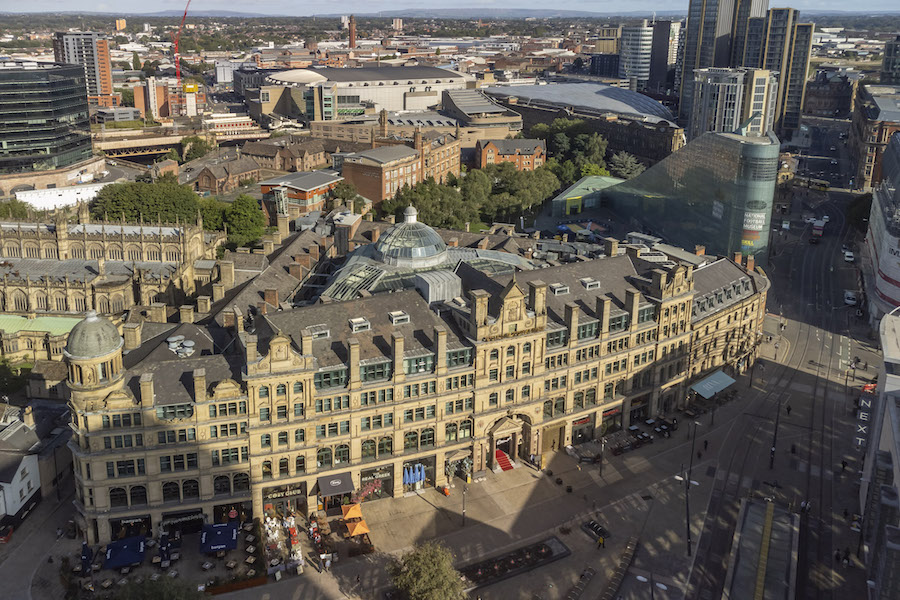
It goes without saying, that the Corn Exchange is one of the most beautiful buildings in the city.
Built-in 1837, this Grade II listed building has witnessed the city’s remarkable transformation from its industrial roots to the vibrant metropolis we know today.
Unveiling the Rich History of the Corn Exchange: A Journey Through Time
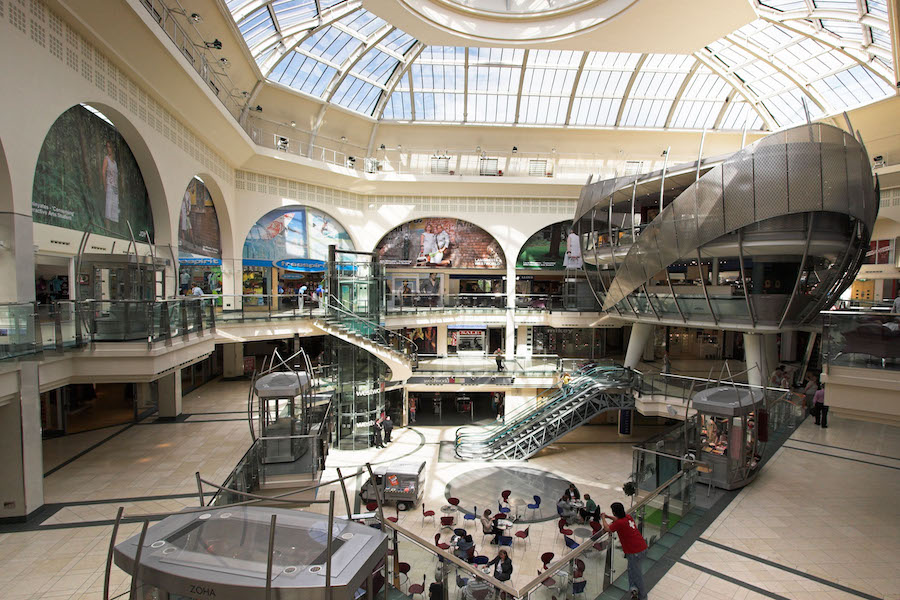
And now you can have a deep dive into the roots of this impressive building, as they have set up an exhibition chronicling the history of the Corn Exchange.
Dan Davis, Corn Exchange General Manager said “I’m thrilled to announce the launch of our new exhibition, which delves deep into the rich history of the Corn Exchange, Manchester.
“Through extensive research, we’ve uncovered fascinating stories, pivotal events, and captivating images that chronicle the evolution of this iconic Manchester landmark.
“We’re not just celebrating its history; we’re also honouring the memories of countless people who’ve visited us over the years with their own recollections.
“The exhibition is a testament to our continued appreciation for this remarkable building, its impact on our city and significance in Manchester culture.”
Join us on a captivating journey through time as we unveil the “History of the Corn Exchange Exhibition” and explore the fascinating stories, pivotal events, and captivating images that chronicle the evolution of this iconic landmark.
A Glimpse into Manchester’s Vibrant Past
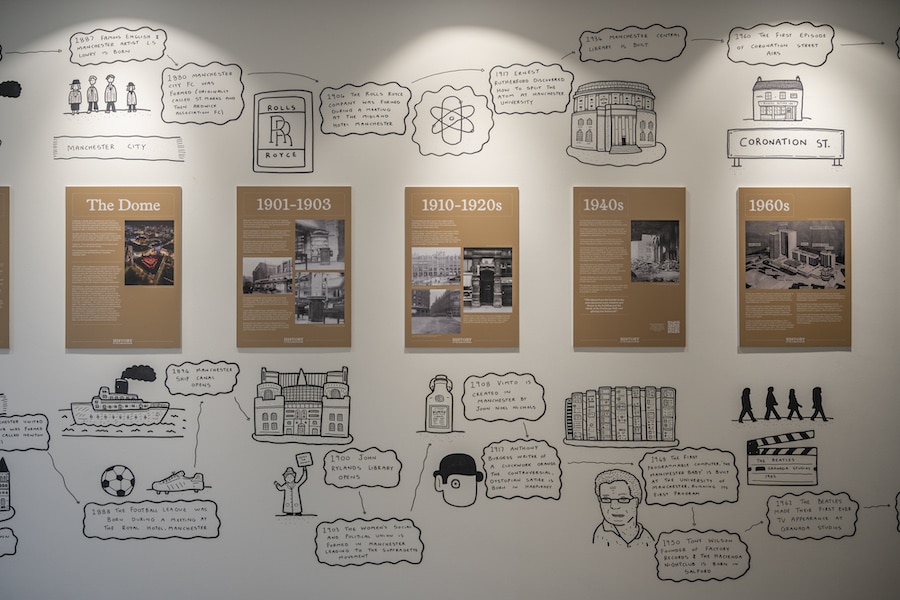
The “History of the Corn Exchange Exhibition” offers a unique opportunity to delve deep into the history of Manchester, as intertwined with the Corn Exchange.
From its humble beginnings in 1837 as Manchester’s first Corn Exchange to its current role as a thriving dining and leisure destination, the Corn Exchange has played an integral role in shaping the city’s identity.
Pivotal Moments in Time
1837: The Birth of Manchester’s First Corn Exchange
The exhibition takes us back to the very beginning, when the Corn Exchange was established as a hub for trading corn and produce, laying the foundation for Manchester’s growth as an economic powerhouse.
1903: Thriving Trading Hub
In 1903, the Corn Exchange underwent significant renovations, solidifying its status as a thriving trading hub.
It became the epicentre of commerce, bustling with activity and commerce.
1940: Surviving Wartime Bombings
The building’s resilience is showcased as it survived the hardships of World War II bombings, a testament to its enduring significance.
As Christmas 1940 approached, two waves of German bombs pounded the city on the eve of December 22nd in to the morning of December 23rd.
Hundreds of people lost their lives and thousands were wounded from these two attacks. The city saw widespread destruction with many buildings being damaged or reduced to ruins.
Three incendiary bombs fell on the floor of the Exchange Hall at 7.20pm on 22nd December but were extinguished without any major damage.
At 5am the following morning, several landmines and bombs were dropped in the vicinity, the nearest being opposite the Exchange Hotel on the Northeast corner of the Cathedral.
The damage to the Cathedral was severe. The rebuild took until 1958 to complete with a striking memento, the Fire Window – a stained glass addition, made in 1963 that can still be viewed today.
The blasts from the bombs in the area shattered every window and frame in the building and the whole of the Exchange Hall roof glazing was destroyed. In addition, corridor screens, doors and division walls were ‘practically all wrecked’. Further damage was caused to the slated roof and the dome due to heavy rainfall on the 29th & 30th December.
The damage caused took almost a year to repair and an amount of £18,036 was claimed under Part’s 1 and 2 of The War Damage Act, 1941. (Equivalent to £1,164,893 in 2023)
1960s: Ambitious Redevelopment Plans
The 1960s marked an era of ambitious redevelopment plans that would have transformed the city.
In the early 1960’s, the Corn Exchange Board of Directors had numerous proposals to purchase the building and land owned by the Corn, Grocery and Produce Exchange Ltd., this was part of a bigger plan for a proposed multi-million-pound redevelopment in the area.
Property Investments Consolidation Ltd. won out in the bidding war and in this 1963 article, we can see a model of the £5 million development taking over a 4.15-acre site bound by Corporation St., Cathedral St., Long Millgate and the Cannon St. section of the City Centre.
It was to include two towering 20- storey office blocks, flanked by a luxury hotel of 120 rooms, two public houses with large shopping precincts, elevated pedestrian ways, luxury flats and having the Corn Exchange feature as one of its central spots.
The whole site would’ve stretched from Victoria Station to Cannon Street with a 200-yard frontage on Corporation Street and the new blocks towering over Manchester Cathedral.
1970s: A Hub of Cultural Activity
During the 1970’s the interior of the building slowly fell into disuse until the arts injected life back into it.
It was used by The Royal Exchange Theatre Company in 1976, and as a filming location for Granada Television in Brideshead Revisited.
It was during this period that the building was recognised as having definite quality and character and in 1973 it became a Grade II listed building, having special interest that warranted preservation
It hosted events and much, much more that captured the spirit of the times.
1980s
1980’s: More of the Same
From the 1980’s, the exterior of the building remained occupied with various business such as shops, banks and places to eat with offices making up the higher floors.
Over time, the inside of the building became a marketplace again but this time it was filled with market stalls selling clothing, books, antiques, jewellery and piercing paraphernalia as well as second-hand record shops and more.
Permanent shops lined the perimeter, while temporary stalls filled the main floor, and a cafe was housed in the basement.
The market was a mecca for alternative culture with one of the main attractions being a fortune teller named Avril who often had a queue hours long!
The accuracy of her consultations earned her a dedicated following and a client list that included celebrities as well as the general public and businesses.
The 1980s Corn Exchange was more akin to today’s Affleck’s Palace with numerous independent traders and stallholders, this era is often held fondest in the memories of Mancunians today.
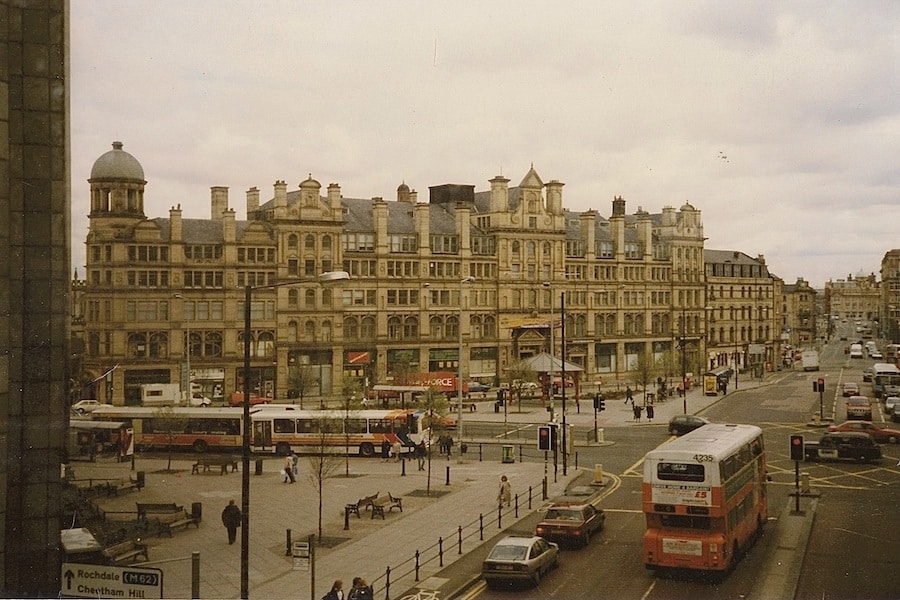
1996: The Impact of the IRA Bombing
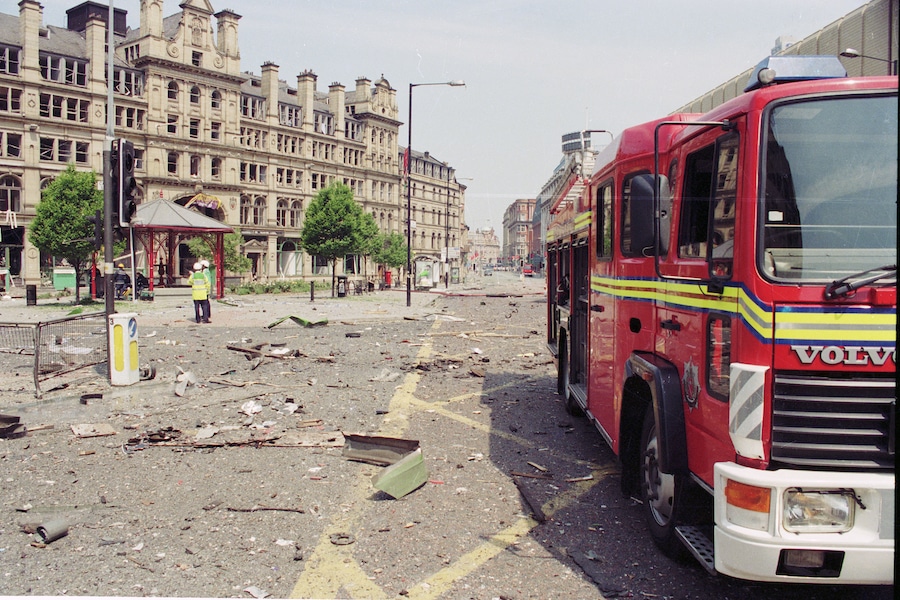
Explore the aftermath of the IRA bombing in 1996 and how it altered the fate of the Corn Exchange, setting the stage for its future transformation.
One of the darkest and most defining moments in Manchester’s recent history is the events of Saturday 15th June 1996. On this day, the Provisional Irish Republican Army (IRA) detonated a 3,300lb lorry bomb on Corporation Street just 100 metres away.
At around 9.20am, a Ford van was parked on Corporation Street just across from The Arndale Centre. Two men left the van after setting a timer and walked behind the Corn Exchange to Cathedral Street where a third man was waiting in a car.
Telephone warnings were made approx. One hour to 90 minutes before the bomb detonated to TV stations, radio stations newspapers and a hospital. Emergency services were able to evacuate around 75,000 people from the city but unfortunately could not defuse the bomb in time and it exploded at 11.17am.
More than 200 people were injured but due to the rapid response of the emergency services there were no fatalities despite the wide scale devastation.
Several buildings were damaged beyond repair with those closest to the blast receiving the worst damage. No building within half a mile was unscathed and that included the Corn Exchange. Our glass dome shattered and fell on to the market area below, all windows were blown in by the blast, external masonry was affected and internal structural damage received. The building was forced to close and a ‘force majuere’ was invoked on the leases of all business, traders and tenants due to this fact with the building then closing. Many of these traders had to close their businesses whilst others moved premises, some to the up and coming Northern Quarter.
It would take 4 years to repair the damage with the building later reopening as The Triangle Shopping Centre.
2000: Restoration into the Triangle Shopping Centre
Witness the meticulous restoration efforts that turned the Corn Exchange into the contemporary Triangle Shopping Centre, winning acclaim as an award-winning visitor attraction.
Following the devastation from the 1996 attack , rebuilding began on the Corn Exchange.
Original features were restored, 800 window frames were replaced and 1700sq metres of new glass was installed in to the windows, the main glass dome and the secondary domes – these can be seen in each balcony that sits on the vertex of our triangle shape. Originally only two of these second domes existed so it was at this point that a third secondary dome was also introduced with one in each of the vertices that remains to this day.
Gone were the flea market stalls and collectable items and instead opened The Triangle Shopping Centre, a modern shopping destination with 55 high end brands like Adidas, Muji, O’Neill and Jigsaw plus more, it was also home to local radio station Galaxy Manchester.
The original Exchange Hall floor was opened up to reveal the basement and the centre became a three tiered complex with a contemporary design that included a glass lift surrounded by an ‘orange peel’ staircase and the iconic Sky Bar. Unfortunately, the centre was not as successful as anticipated.
The Marvel of the Glass Dome
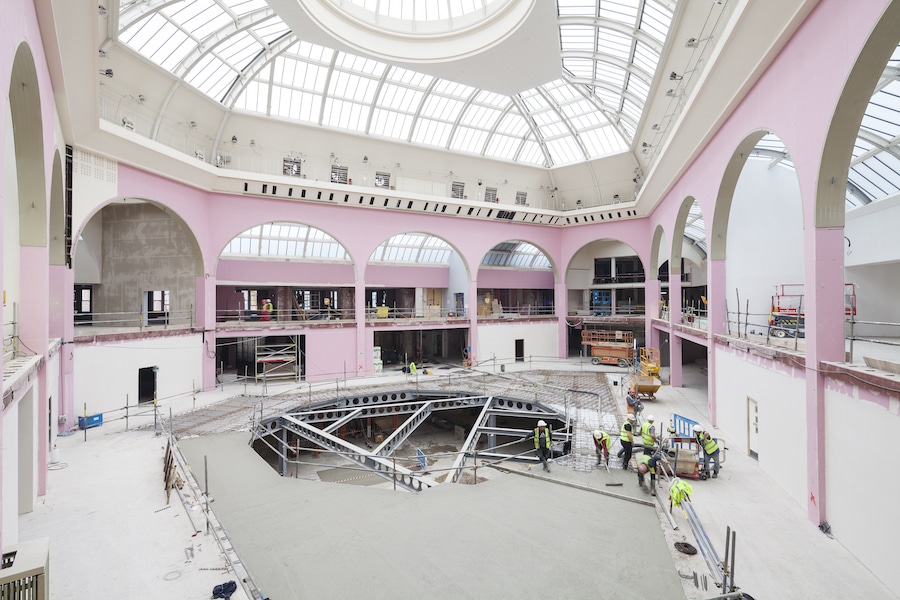
Learn about the engineering marvel that is the Corn Exchange’s glass dome, a symbol of architectural innovation.
Behind-the-scenes images reveal how the original trading floor was reinstated and original features were uncovered, preserving the building’s heritage.
Dave Draws: Bringing History to Life Through Art
As you explore the exhibition, you’ll encounter an art trail featuring the signature doodle artwork of Manchester artist Dave Draws.
His art breathes life into key historical events and fun facts, making history come alive before your eyes.
A Must-Visit for All
The “History of the Corn Exchange Exhibition” is a must-visit for history enthusiasts, locals, tourists, and anyone intrigued by the history of Manchester and this iconic building.
The Corn Exchange’s story is not just about bricks and mortar; it’s a testament to the memories of countless individuals who have visited over the years, each with their own unique recollections.
Plan Your Visit Today
We invite you to plan your visit to the Corn Exchange and immerse yourself in of Manchester’s history.
For more information and updates, please click here
- This article was last updated 1 year ago.
- It was first published on 15 September 2023 and is subject to be updated from time to time. Please refresh or return to see the latest version.
Did we miss something? Let us know: [email protected]
Want to be the first to receive all the latest news stories, what’s on and events from the heart of Manchester? Sign up here.
Manchester is a successful city, but many people suffer. I Love Manchester helps raise awareness and funds to help improve the lives and prospects of people across Greater Manchester – and we can’t do it without your help. So please support us with what you can so we can continue to spread the love. Thank you in advance!
An email you’ll love. Subscribe to our newsletter to get the latest news stories delivered direct to your inbox.
Got a story worth sharing?
What’s the story? We are all ears when it comes to positive news and inspiring stories. You can send story ideas to [email protected]
While we can’t guarantee to publish everything, we will always consider any enquiry or idea that promotes:
- Independent new openings
- Human interest
- Not-for-profit organisations
- Community Interest Companies (CiCs) and projects
- Charities and charitable initiatives
- Affordability and offers saving people over 20%
For anything else, don’t hesitate to get in touch with us about advertorials (from £350+VAT) and advertising opportunities: [email protected]


Legendary Manchester restaurant to undergo “huge transformation” under new ownership








